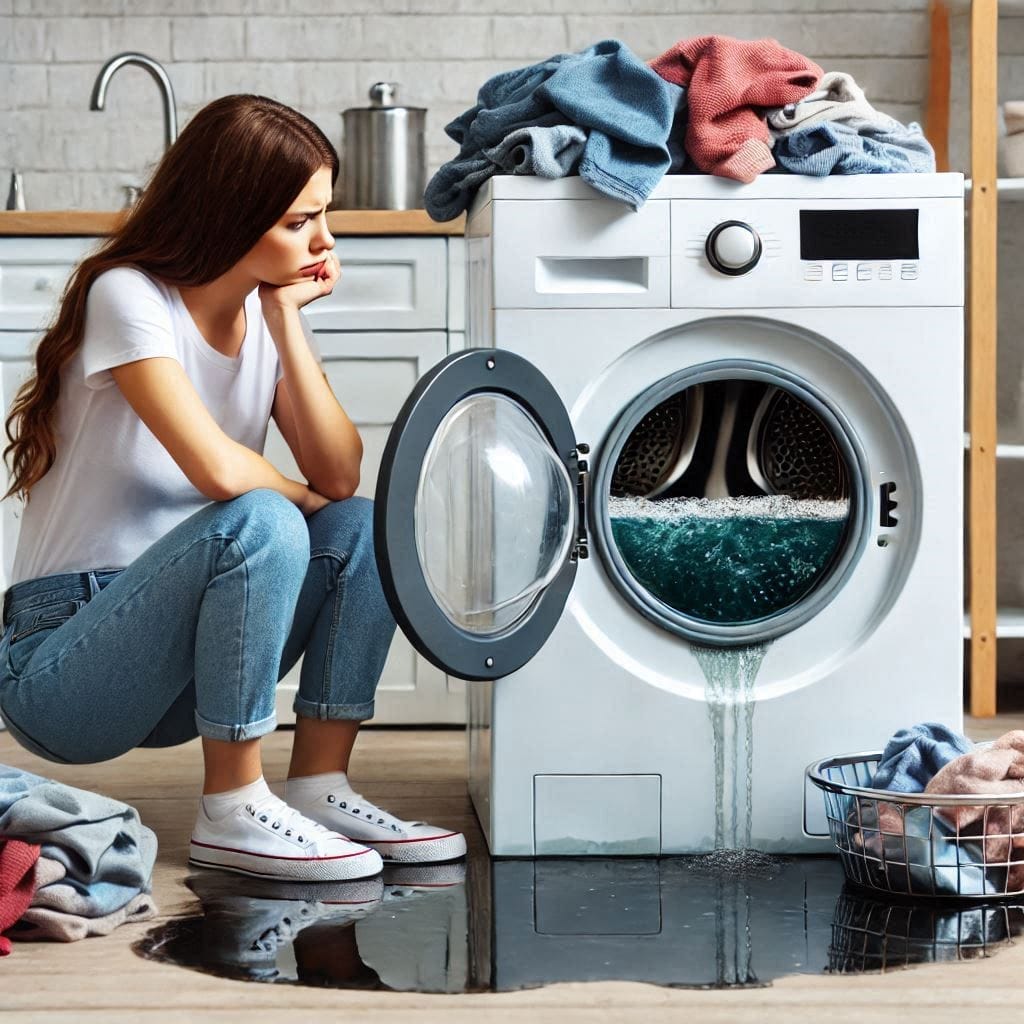A washing machine that won’t drain is frustrating, but it’s often caused by a simple issue that you can fix yourself. Whether it’s a clogged drain hose, a faulty pump, or a problem with your home’s plumbing, diagnosing the issue early can prevent costly repairs. In this guide, we’ll walk through the common reasons why your washing machine isn’t draining and how you can fix it.
How a Washing Machine Drainage System Works
Before jumping into solutions, it helps to understand how your washing machine drains water. After the wash and rinse cycles, the pump activates to push water through the drain hose and into your home’s plumbing system. If something goes wrong at any point in this process, your washer may not drain properly.
Top Reasons Your Washing Machine Won’t Drain
1. Clogged Drain Hose
A blocked drain hose is one of the most common reasons your washing machine won’t drain. Over time, lint, debris, and small clothing items can build up inside the hose, restricting water flow.
How to Fix It:
- Unplug the washer and locate the drain hose.
- Disconnect the hose and check for clogs.
- Use a plumbing snake or a straightened wire hanger to remove debris.
- Reattach the hose and test the machine.
2. Faulty Drain Pump
If the pump is damaged or obstructed, water won’t be able to exit the machine. Listen for a humming sound, which could indicate a jammed or burned-out pump.
Fix:
- Remove the washing machine’s back panel to access the pump.
- Check for obstructions, such as coins, hair ties, or lint.
- If the pump is damaged, replace it.
3. Blocked Coin Trap or Filter
Many washers have a small coin trap or drain filter that catches debris before it reaches the pump. If it gets clogged, water won’t drain properly.
How to Clean It:
- Locate the filter (usually near the front bottom of the machine).
- Open it and remove any debris.
- Rinse it thoroughly before reinserting.
4. Lid Switch Malfunction (For Top-Load Machines)
Top-loading machines have a lid switch that prevents spinning and draining when the lid is open. If this switch is faulty, the machine may not drain.
Fix:
- Check if the switch clicks when you close the lid.
- If there’s no click, test the switch with a multimeter.
- Replace the switch if it’s defective.
DIY Fixes for a Washing Machine That Won’t Drain
If you’re dealing with a washer that won’t drain, try these simple troubleshooting steps:
- Check the drain hose for blockages.
- Inspect the drain pump and filter.
- Ensure the washing machine is level.
- Perform a reset on your washing machine.
When to Call a Professional Appliance Repair Service
If you’ve tried the fixes above and your washing machine still won’t drain, it might be time to call a professional repair service like Hillside Appliance Services. A technician can quickly diagnose and fix complex problems, saving you time and preventing further damage.
Preventative Maintenance Tips to Avoid Drainage Issues
- Clean the drain filter regularly.
- Avoid overloading your washing machine.
- Use high-efficiency detergent to prevent soap buildup.
- Inspect hoses for kinks or leaks every few months.
Frequently Asked Questions (FAQs)
Q1: How do I manually drain my washing machine?
A: You can manually drain it by disconnecting the drain hose and letting water flow into a bucket.
Q2: Can a clogged drain hose cause a washing machine not to spin?
A: Yes, a clogged hose can prevent proper draining, which may stop the spin cycle.
Q3: How often should I clean my washing machine filter?
A: Every 1–3 months, depending on usage.
Q4: Why does my washer drain but leave some water behind?
A: A partially clogged drain hose or filter may slow down water drainage.
Final Thoughts on Fixing a Washing Machine That Won’t Drain
A washing machine that won’t drain is inconvenient but usually fixable with a few troubleshooting steps. If you can’t solve the issue, contact Hillside Appliance Services for professional help.
